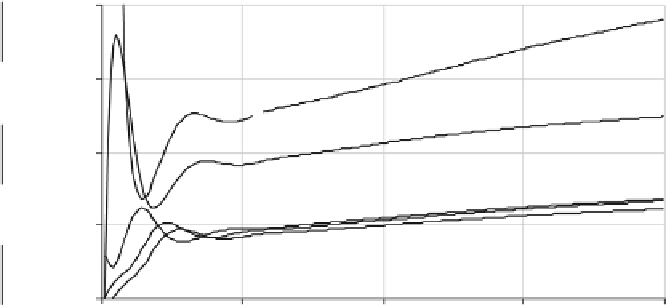Database Reference
In-Depth Information
1: MALE 030
2: MALE 3060
3: MALE 90120
4: MALE 150180
5: MALE 180210
1:
300000.00
2:
3:
4:
1
5:
1
1
2
1:
2
2:
155000.00
3:
2
4:
5:
2
3
4
5
3
4
5
3
4
5
4
5
3
1:
2:
3:
4:
5:
10000.00
0.00
12.50
25.00
37.50
50.00
Years
Fig. 11.9
1
: FEMALE 030
2: F 3060
3: F 90120
4: F 150180
5: F 180210
1:
300000.00
2:
1
3:
4:
5:
1
1
2
1:
2
2:
2
3:
150000.00
4:
5:
2
3
4
5
4
3
5
3
4
5
4
5
3
1:
2:
3:
4:
5:
0.00
0.00
12.50
25.00
37.50
50.00
Years
Fig. 11.10
fish are always in the smaller size classes. Note that the two largest cohorts are the
lowest and are proportionately lower than those without fishing. These size classes
are particular susceptible to fishing mortality because of their increased vulnerability
and because anglers prefer to keep larger the larger fish (Figures 11.11 and 11.12).
Notice that the female population (Figure 11.12) is not as affected by fishing
mortality as the male population (Figure 11.11). This is due to the fact that the
catchability of females is not as high as males. Males generally remain higher in
the water column and possess more aggressive behavioral characteristics that cause
them to be more susceptible to fishing.






































